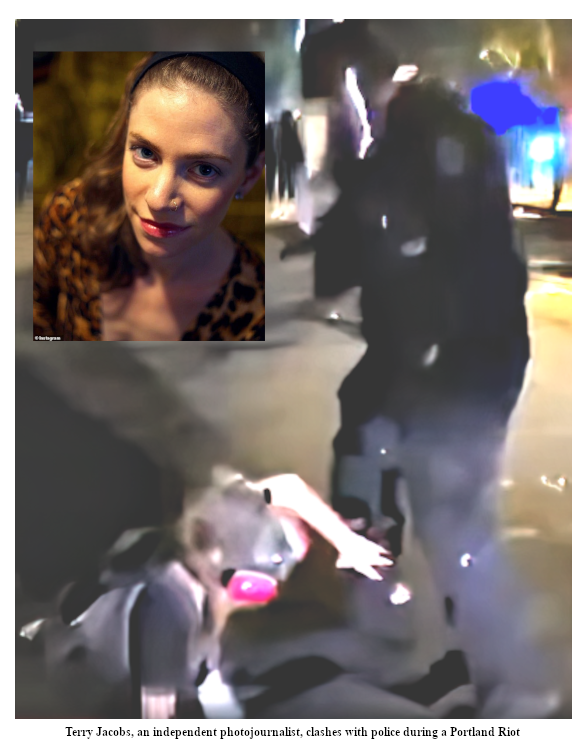I recently came across the story of the self proclaimed photojournalist Teri Jacobs, who got into a clash with police and was knocked to the ground by the riot squad when she was perceived as a rioter by one of it’s members.
While I’m aware that she received a $50,000 settlement from the city of Portland, there are some simple mistakes that she made that make me wonder if she was truly there for journalistic documentation, or whether she was simply there to cause trouble. First and foremost, there is the fact that she doesn’t appear to have a camera. Most photojournalists will be taking photographs and most use cameras.
Secondly, she is dressed like a rioter. Antifa has a certain look, and this young woman fit it perfectly. She has nothing on that isn’t black as far as her clothing goes, and nothing that identifies her as a member of the press.
Lastly, and probably most importantly from a tactical viewpoint, is the fact that she isn’t wearing a gasmask, she is wearing a respirator. The difference is that what she is wearing has limited purposes; it will protect you from sawdust and metal shavings, and it will conceal your identity. It will NOT however, protect you from chemical irritants or smoke.
Why is this important? Quite simply because police officers have to make determinations from what they see, hear, smell, and feel. If you don’t want to be perceived as a rioter then you need to make sure that you don’t look, (or act), like a rioter. I have been both a cop and a journalist. I’ve had times, during trouble, that I’ve actually walked among the cops as a photojournalist, without identifying myself as a former cop,. and documented what they were doing with no problem from them at all. Rioters can be another issue and I can understand why one might want to fit in with them to avoid being targeted by them. There is no easy answer; however, one thing I do is I have an oversize press ID that I wear around my neck on a lanyard. I can easily put it in my shirt if I want to blend in the crowd, and quickly pull it out if I want to be identified as press. The important thing to realize is that photojournalism can be dangerous, it’s just part of the job. However, with a little bit of planning and common sense, some of the risk can be mitigated.
